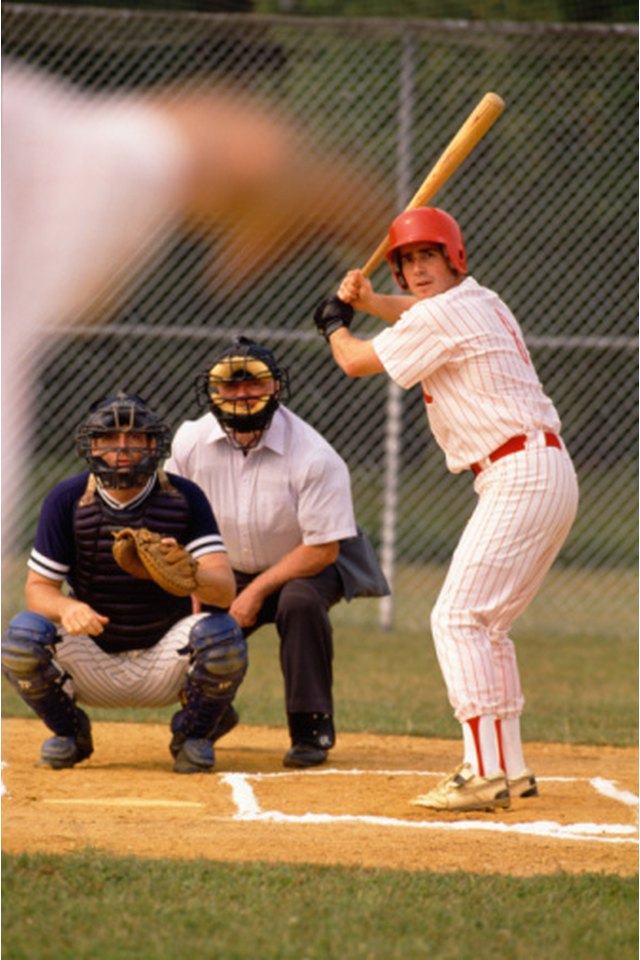What About Base Runners on a Dropped Third Strike?

The dropped third strike can be one of baseball's more confusing plays, especially for base runners. Sure, Rule 6.09(b) in the Official Rules of Major League Baseball explains it clearly: “The batter becomes a runner when … the third strike called by the umpire is not caught, providing (1) first base is unoccupied, or (2) first base is occupied with two out." But that doesn't mean there's not bedlam on the bases from time to time.
Who's on First?
Know the rule. When a third strike is called by the umpire, or there is a swing and miss and the catcher does not make a legal catch -- that is, he misses the ball completely, or the ball hits the dirt first -- the batter may attempt to reach first base, but only if first base is unoccupied when there are fewer than two outs. When there are two outs, the batter may attempt to reach first base even if it is occupied at the start of the play.
Run at Your Own Risk
Be careful. If there are two outs, there is no good reason for the runner on first to not run toward second on a dropped third strike. However, the two-out situation is the only time when the runner is not taking a risk. A runner on second or third can advance on a dropped third strike at his own peril, as if it were any other ball in play.
Fielders Get Confused
Ignore the stolen base. "Confusion seems to only occur when the runner on first is stealing and the third strike is dropped," says Princeton baseball coach Scott Bradley. "The defensive team needs to be aware that if there's a runner on first at the start of the play, and there are less than two outs, the dropped third strike rule does not apply and there's no reason to chase the batter or throw to first."
Remember force plays. "If the bases are loaded with two out and the catcher drops or doesn't catch the third strike," says former major league umpire Jim Evans, "a force play goes into effect because the batter has now become a runner. The catcher may step on home plate to force out the runner from third or tag the batter or throw to any other base."
It Ain't Over 'til It's Over
The most famous dropped third strike in baseball history happened in Game 4 of the 1941 World Series between the Brooklyn Dodgers and New York Yankees. In the top of the ninth inning, with the Dodgers leading 4-3, Yankee Tommy Henrich faced Dodgers reliever Hugh Casey with two outs and no one on. On a full-count pitch, Henrich swung at strike three. But the game was not over. The ball got past Dodgers catcher Mickey Owen, allowing Henrich to reach first base safely. The Yankees went on to win the game 7-4 and went on to win the Series.
Writer Bio
Jeff Bradley is a freelance writer whose career has spanned more than 20 years. He has written extensively for "ESPN The Magazine," "Sports Illustrated" and the "New York Daily News."
